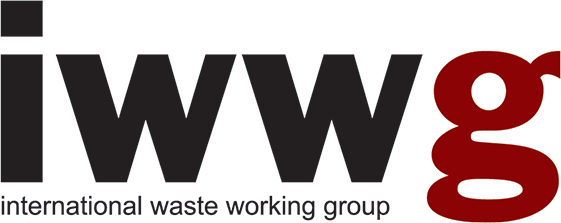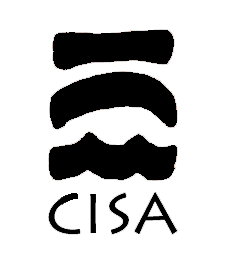BIODEGRADATION OF EXPANDED POLYSTYRENE USING PSEUDOMONAS AERUGINOSA VITARK5
- Arun Dhanasekaran - Department of Biomedical Sciences, School of Bio Sciences and Technology, Vellore Institute of Technology, India
- Kritika Tiwari - Department of Biomedical Sciences, School of Bio Sciences and Technology, Vellore Institute of Technology, India
- Arpita Bhange - Department of Biomedical Sciences, School of Bio Sciences and Technology, Vellore Institute of Technology, India
- Shankha Shubhra Ghosh - Department of Biomedical Sciences, School of Bio Sciences and Technology, Vellore Institute of Technology, India
- Krishnan Kannabiran - Department of Biomedical Sciences, School of Bio Sciences and Technology, Vellore Institute of Technology, India
- Available online in Detritus - Volume 30 / March 2025
- Pages 99-108
Access restricted to subscribed members only
Released under All rights reserved
Copyright: © 2024 CISA Publisher
Abstract
Polystyrene, a widely used thermoplastic, polluting the environment in the form of micro/nanoplastics. Though traditional methods are commonly employed for plastic management, microbial degradation remains a more promising and eco-friendly approach. The present study focused on the biodegradation of expanded polystyrene (EPS) using microbes isolated from plastic-contaminated sites and assessing the degradants for their industrial importance. An isolate, VITARK5, was able to grow well in Bushnell Haas agar containing EPS as the only carbon source and was chosen for biodegradation studies. With robust glycolipid biosurfactant synthesis and biofilm formation, VITARK5 was identified to be Pseudomonas aeruginosa. In order to study biodegradation, VITARK5 was inoculated in Bushnell Haas broth containing thin EPS film and incubated at 37°C and 120 rpm for two weeks. After biodegradation, gravimetric analysis showed a 14.53% weight reduction of EPS film compared to the control. Formation of cracks and rough surfaces was observed on the film under scanning electron microscopy. GCMS analysis showed the presence of industrially important chemicals such as valerenol, 3-hydroxyl, 4-methoxy benzaldehyde, oxalic acid, dodecane, azacyclododecane and hexadecane. FTIR spectroscopy confirmed the presence of functional groups associated with the EPS and its additives. Biofilm formation and biosurfactant production synergistically would have promoted biodegradation. The findings of the present study suggest that the isolate P. aeruginosa sp.VITARK5 may be used in bioremediation for polystyrene degradation and valorisation to achieve circular bio-economy.Keywords
Editorial History
- Received: 05 Nov 2024
- Revised: 25 Feb 2025
- Accepted: 27 Mar 2025
- Available online: 31 Mar 2025
References
Arkatkar, A., Juwarkar, A. A., Bhaduri, S., Uppara, P. V., & Doble, M. (2010). Growth of Pseudomonas and Bacillus biofilms on pretreated polypropylene surface. International Biodeterioration & Biodegradation, 64(6), 530-536.
DOI 10.1016/j.ibiod.2010.06.002
Charnock, C. (2021). A simple and novel method for the production of polyethylene terephthalate containing agar plates for the growth and detection of bacteria able to hydrolyze this plastic. Journal of Microbiological Methods, 185, 106222.
DOI 10.1016/j.mimet.2021.106222
Choi, J., Kim, H., Ahn, Y. R., Kim, M., Yu, S., Kim, N., ... & Kim, H. O. (2024). Recent advances in microbial and enzymatic engineering for the biodegradation of micro-and nanoplastics. RSC advances, 14(14), 9943-9966.
DOI 10.1039/D4RA00844H
Choi, S. Y., Lee, Y., Yu, H. E., Cho, I. J., Kang, M., & Lee, S. Y. (2023). Sustainable production and degradation of plastics using microbes. Nature Microbiology, 8(12), 2253-2276.
DOI 10.1038/s41564-023-01529-1
Chong, H., & Li, Q. (2017). Microbial production of rhamnolipids: opportunities, challenges and strategies. Microbial cell factories, 16, 1-12.
DOI 10.1186/s12934-017-0753-2
Chrzanowski, Ł., Ławniczak, Ł., & Czaczyk, K. (2012). Why do microorganisms produce rhamnolipids?. World Journal of Microbiology and Biotechnology, 28, 401-419.
DOI 10.1007/s11274-011-0854-8
Cregut, M., Bedas, M., Durand, M. J., & Thouand, G. (2013). New insights into polyurethane biodegradation and realistic prospects for the development of a sustainable waste recycling process. Biotechnology advances, 31(8), 1634-1647.
DOI 10.1016/j.biotechadv.2013.08.011
Fang, J., Xuan, Y., & Li, Q. (2010). Preparation of polystyrene spheres in different particle sizes and assembly of the PS colloidal crystals. Science China Technological Sciences, 53, 3088-3093.
DOI 10.1007/s11431-010-4110-5
Gambarini, V., Pantos, O., Kingsbury, J. M., Weaver, L., Handley, K. M., & Lear, G. (2022). PlasticDB: a database of microorganisms and proteins linked to plastic biodegradation. Database, 2022, baac008.
DOI 10.1093/database/baac008
Ghosh, S. K., Pal, S., & Ray, S. (2013). Study of microbes having potentiality for biodegradation of plastics. Environmental Science and Pollution Research, 20, 4339-4355.
DOI 10.1007/s11356-013-1706-x
Ghosh, S., Qureshi, A., & Purohit, H. J. (2019). Microbial degradation of plastics: Biofilms and degradation pathways. Contaminants in agriculture and environment: health risks and remediation, 1, 184-199. 10.26832/AESA-2019-CAE-0153-014
Giacomucci, L., Raddadi, N., Soccio, M., Lotti, N., & Fava, F. (2019). Polyvinyl chloride biodegradation by Pseudomonas citronellolis and Bacillus flexus. New biotechnology, 52, 35-41.
DOI 10.1016/j.nbt.2019.04.005
Gupta, C., Kaushik, S., Jain, S., Dhanwani, I., Garg, S., Paul, A., ... & Gupta, N. (2022). Bioaccumulation and toxicity of polystyrene nanoplastics on marine and terrestrial organisms with possible remediation strategies: A review. Environmental Advances, 8, 100227.
DOI 10.1016/j.envadv.2022.100227
Hamzah, A. F., Al-Mossawy, M. I., Al-Tamimi, W. H., Al-Najm, F. M., & Hameed, Z. M. (2020). Enhancing the spontaneous imbibition process using biosurfactants produced from bacteria isolated from Al-Rafidiya oil field for improved oil recovery. Journal of Petroleum Exploration and Production Technology, 10, 3767-3777.
DOI 10.1007/s13202-020-00874-9
Hasan, M. U., Singh, Z., Shah, H. M. S., Kaur, J., Woodward, A., Afrifa-Yamoah, E., & Malik, A. U. (2023). Oxalic acid: A blooming organic acid for postharvest quality preservation of fresh fruit and vegetables. Postharvest Biology and Technology, 206, 112574.
DOI 10.1016/j.postharvbio.2023.112574
Ho, B. T., Roberts, T. K., & Lucas, S. (2018). An overview on biodegradation of polystyrene and modified polystyrene: the microbial approach. Critical reviews in biotechnology, 38(2), 308-320.
DOI 10.1080/07388551.2017.1355293
Hou, L., & Majumder, E. L. W. (2021). Potential for and distribution of enzymatic biodegradation of polystyrene by environmental microorganisms. Materials, 14(3), 503.
DOI 10.3390/ma14030503
Jaiswal, S., Sharma, B., & Shukla, P. (2020). Integrated approaches in microbial degradation of plastics. Environmental Technology & Innovation, 17, 100567.
DOI 10.1016/j.eti.2019.100567
Kang, M. G., Kwak, M. J., & Kim, Y. (2023). Polystyrene microplastics biodegradation by gut bacterial Enterobacter hormaechei from mealworms under anaerobic conditions: Anaerobic oxidation and depolymerization. Journal of Hazardous Materials, 459, 132045.
DOI 10.1016/j.jhazmat.2023.132045
Khandare, S. D., Chaudhary, D. R., & Jha, B. (2021). Bioremediation of polyvinyl chloride (PVC) films by marine bacteria. Marine Pollution Bulletin, 169, 112566.
DOI 10.1016/j.marpolbul.2021.112566
Kim, Y. B., Kim, S., Park, C., & Yeom, S. J. (2024). Biodegradation of polystyrene and systems biology-based approaches to the development of new biocatalysts for plastic degradation. Current Opinion in Systems Biology, 100505.
DOI 10.1016/j.coisb.2024.100505
Kumar, A. G., Hinduja, M., Sujitha, K., Rajan, N. N., & Dharani, G. (2021). Biodegradation of polystyrene by deep-sea Bacillus paralicheniformis G1 and genome analysis. Science of the Total Environment, 774, 145002.
DOI 10.1016/j.scitotenv.2021.145002
Lin, W., Yao, Y., Su, T., & Wang, Z. (2024). Biodegradation of polystyrene by bacteria isolated from the yellow mealworm (Tenebrio molitor) gut. Journal of Environmental Chemical Engineering, 12(2), 112071.
DOI 10.1016/j.jece.2024.112071
Liu, J., Chen, Y., Xu, R., & Jia, Y. (2013). Screening and evaluation of biosurfactant-producing strains isolated from oilfield wastewater. Indian journal of microbiology, 53, 168-174.
DOI 10.1007/s12088-013-0379-y
Machona, O., Chidzwondo, F., & Mangoyi, R. (2022). Tenebrio molitor: possible source of polystyrene-degrading bacteria. BMC biotechnology, 22(1), 2.
DOI 10.1186/s12896-021-00733-3
McFall, A., Coughlin, S. A., Hardiman, G., & Megaw, J. (2024). Strategies for biofilm optimization of plastic-degrading microorganisms and isolating biofilm formers from plastic-contaminated environments. Sustainable Microbiology, 1(1).
DOI 10.1093/sumbio/qvae012
Mohan, A. J., Sekhar, V. C., Bhaskar, T., & Nampoothiri, K. M. (2016). Microbial assisted high impact polystyrene (HIPS) degradation. Bioresource technology, 213, 204-207.
DOI 10.1016/j.biortech.2016.03.021
Nie, H., Nie, M., Xiao, T., Wang, Y., & Tian, X. (2017). Hexadecane degradation of Pseudomonas aeruginosa NY3 promoted by glutaric acid. Science of the Total Environment, 575, 1423-1428.
DOI 10.1016/j.scitotenv.2016.09.223
Noordman, W. H., & Janssen, D. B. (2002). Rhamnolipid stimulates uptake of hydrophobic compounds by Pseudomonas aeruginosa. Applied and environmental microbiology, 68(9), 4502-4508.
DOI 10.1128/AEM.68.9.4502-4508.2002
O’Toole, G. A. (2011). Microtiter dish biofilm formation assay. JoVE (Journal of Visualized Experiments), (47), e2437.
DOI 10.3791/2437
Pamp, S. J., & Tolker-Nielsen, T. (2007). Multiple roles of biosurfactants in structural biofilm development by Pseudomonas aeruginosa. Journal of bacteriology, 189(6), 2531-2539.
DOI 10.1128/jb.01515-06
Patil, R., & Bagde, U. S. (2012). Isolation of polyvinyl chloride degrading bacterial strains from environmental samples using enrichment culture technique. African Journal of Biotechnology, 11(31), 7947-7956.
DOI 10.5897/AJB11.3630
Plakunov, V. K., Gannesen, A. V., Mart’Yanov, S. V., & Zhurina, M. V. (2020). Biocorrosion of synthetic plastics: degradation mechanisms and methods of protection. Microbiology, 89, 647-659.
DOI 10.1134/S0026261720060144
Qiao, R., Mortimer, M., Richter, J., Rani-Borges, B., Yu, Z., Heinlaan, M., ... & Ivask, A. (2022). Hazard of polystyrene micro-and nanospheres to selected aquatic and terrestrial organisms. Science of the Total Environment, 853, 158560.
DOI 10.1016/j.scitotenv.2022.158560
Roberts, C., Edwards, S., Vague, M., León-Zayas, R., Scheffer, H., Chan, G., ... & Mellies, J. L. (2020). Environmental consortium containing Pseudomonas and Bacillus species synergistically degrades polyethylene terephthalate plastic. Msphere, 5(6), 10-1128.
DOI 10.1128/msphere.01151-20
Roy, A., & Chakraborty, S. (2024). A comprehensive review on sustainable approach for microbial degradation of plastic and it’s challenges. Sustainable Chemistry for the Environment, 100153.
DOI 10.1016/j.scenv.2024.100153
Savoldelli, J., Tomback, D., & Savoldelli, H. (2017). Breaking down polystyrene through the application of a two-step thermal degradation and bacterial method to produce usable byproducts. Waste Management, 60, 123-126.
DOI 10.1016/j.wasman.2016.04.017
Shah, Z., Gulzar, M., Hasan, F., & Shah, A. A. (2016). Degradation of polyester polyurethane by an indigenously developed consortium of Pseudomonas and Bacillus species isolated from soil. Polymer Degradation and Stability, 134, 349-356.
DOI 10.1016/j.polymdegradstab.2016.11.003
Shathi, A. S., Mostafa, M. G., Rahman, M. A., Biswas, P. K., Alam, M. S., Rana, M. S., ... & Zaman, M. N. (2024). Iron removal from red clay using oxalic acid leaching for enhanced ceramic industry applications. Heliyon, 10(19).
DOI 10.1016/j.heliyon.2024.e38863
Siddiqui, S. A., Singh, S., Bahmid, N. A., Shyu, D. J., Domínguez, R., Lorenzo, J. M., ... & Câmara, J. S. (2023). Polystyrene microplastic particles in the food chain: Characteristics and toxicity-A review. Science of The Total Environment, 892, 164531.
DOI 10.1016/j.scitotenv.2023.164531
Stepanović, S., Vuković, D., Hola, V., Bonaventura, G. D., Djukić, S., Ćirković, I., & Ruzicka, F. (2007). Quantification of biofilm in microtiter plates: overview of testing conditions and practical recommendations for assessment of biofilm production by staphylococci. Apmis, 115(8), 891-899.
DOI 10.1111/j.1600-0463.2007.apm_630.x
Taghavi, N., Zhuang, W. Q., & Baroutian, S. (2022). Effect of rhamnolipid biosurfactant on biodegradation of untreated and UV-pretreated non-degradable thermoplastics: Part 2. Journal of Environmental Chemical Engineering, 10(1), 107033.
DOI 10.1016/j.jece.2021.107033
Thavasi, R., Sharma, S., & Jayalakshmi, S. (2011). Evaluation of screening methods for the isolation of biosurfactant producing marine bacteria. J Pet Environ Biotechnol S, 1(2), 1-7.
DOI 10.4172/2157-7463.1000105
Thi, M. T. T., Wibowo, D., & Rehm, B. H. (2020). Pseudomonas aeruginosa biofilms. International journal of molecular sciences, 21(22), 8671.
DOI 10.3390/ijms21228671
Wang, W., Yao, S., Zhao, Z., Liu, Z., Li, Q. X., Yan, H., & Liu, X. (2024). Degradation and potential metabolism pathway of polystyrene by bacteria from landfill site. Environmental Pollution, 343, 123202.
DOI 10.1016/j.envpol.2023.123202
Ward, P. G., Goff, M., Donner, M., Kaminsky, W., & O’Connor, K. E. (2006). A two step chemo-biotechnological conversion of polystyrene to a biodegradable thermoplastic. Environmental science & technology, 40(7), 2433-2437.
DOI 10.1021/es0517668
Wilkes, R. A., & Aristilde, L. (2017). Degradation and metabolism of synthetic plastics and associated products by Pseudomonas sp.: capabilities and challenges. Journal of applied microbiology, 123(3), 582-593.
DOI 10.1111/jam.13472
Woo, S., Song, I., & Cha, H. J. (2020). Fast and facile biodegradation of polystyrene by the gut microbial flora of Plesiophthalmus davidis larvae. Applied and Environmental Microbiology, 86(18), e01361-20.
DOI 10.1128/AEM.01361-20



